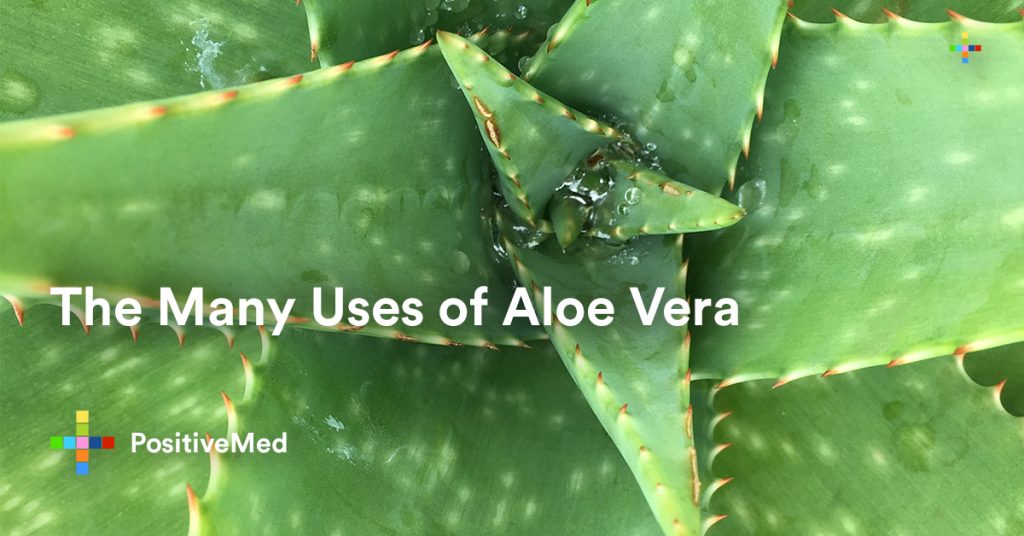Plants can have many beneficial uses in numerous capacities and Aloe Vera is definitely one of these plants. Whether you grow your own Aloe Vera, or you purchase fresh quantities from your trusted nursery, the uses of Aloe Vera outweigh the costs. For generations around the world, Aloe Vera has been used in the healing of ailments associated with skin conditions. Studies conducted in recent times discovered that this isn’t all this miracle plant can do!

Throughout this article, we will look at the many uses of Aloe Vera and how we can grow our own either in an outdoor or through the use of a windowsill garden.
Growing Your Own Aloe Vera
The Aloe Vera plant thrives in dry and hot conditions. It can be easily grown in your home through the use of a strong light system that heats the air around the space to a particular temperature.
Aloe Vera is a succulent plant and will grow to its maximum potential from either seed or clone of an adult plant. Leaf cuttings will not grow due to its complex nature. Aloe Vera grows with short roots and a heavy top leaf, so changing the pot size as the growth occurs is essential. These plants require at least eight hours of sunlight per day up to a maximum of 10 hours. Although the plant will continue to grow in cooler conditions, prolonged exposure will lead to a dormant state and a drop in temperature to lower than -4 degrees Celsius will cause harm to the plant.
It is recommended that a light system is used to duplicate sunlight conditions if the typical climate of your hometown doesn’t provide adequate sunlight. Use caution though and remove the plant from light or use a lighter shade if you notice the leaves turning brown, as this is a sign of burning.
Ensure the Aloe Vera plant receives proper water in proportion with the size of the plant. Always check that the plant has well-draining soil containing both sand and gravel as the plant can rot if left sitting in collected water. Watering is not recommended until the soil is approximately three inches. Poke a hole through the bottom of the container housing the plant to provide additional drainage.
Although usage is only recommended once a year, use some fertilizer so your plant receives the proper nutrients needed for growth outside of their normal climate. Fertilizer will be best received by the plant at the start of the growing season or late spring.
How to Use Aloe Vera
• Healing minor skin ailments or conditions – Aloe Vera has been proven to be an effective pain reliever when suffering from burns, frostbite or cold sores. It provides instant relief of pain and itching. The Aloe Vera gel found in the leaves of the plant can provide faster healing by providing a UV-induced suppression.
• Internal Bowel Conditions/Constipation – the anthraquinones properties in Aloe Vera creates a natural laxative by increasing intestinal water content.
• Boosts the Immune System – The enzymes present in the plant will help the body break down proteins for conversion into amino acids, which are then used by natural enzymes to provide fuel to each and every cell.
• Provides Antioxidants – The containment of multiple vitamins and minerals, including but not limited to Vitamins A, C, E, and B12 along with Zinc, to create a natural antioxidant cocktail.
• Natural Treatment of Diabetes – Properties found in Aloe Vera has shown evidence in various studies that it can alleviate the chronic hyperglycemia and perturbed lipid profile commonly found in those suffering from diabetes and these internal chemicals are major risk factors for future cardiovascular complications.
While all of these factors are definite selling points of Aloe Vera, it has many more uses as proven by the continued usage by the general population. It has been proven to increase the effectiveness of dental hygiene by reducing plaque and treating bad breath. Some of these uses also included but are not limited to natural cure for depression, a natural fever reducer, a natural cure for acne, a natural makeup remover, a natural moisturizer and more.
Where to Find Aloe Vera
Aloe Vera can be found in your local health food store in the form of juice, extracts, gels, and juices. Always carefully read the labels to ensure that it is 100% pure Aloe Vera and that no other additives were used in the product.
Avoid high doses of Aloe Vera as it can cause stomach upset, hematuria (urine mixed with blood) or kidney problems in the most severe cases. Always follow the recommended dosages as prescribed by a medical professional or natural health expert.
Conclusion
The usage of natural health remedies is definitely on the rise at a global scale due to new and scary diseases being discovered daily. Too many chemicals can lead to further complications down the road, so people turn to natural remedies that employ more than one benefit. If you find yourself suffering from any of the above, with a less than a successful rate of relief, why not turn to the natural healing properties of Aloe Vera? It can only provide benefits instead of harm but as always, check with a medical professional before introducing anything new to your medication.







